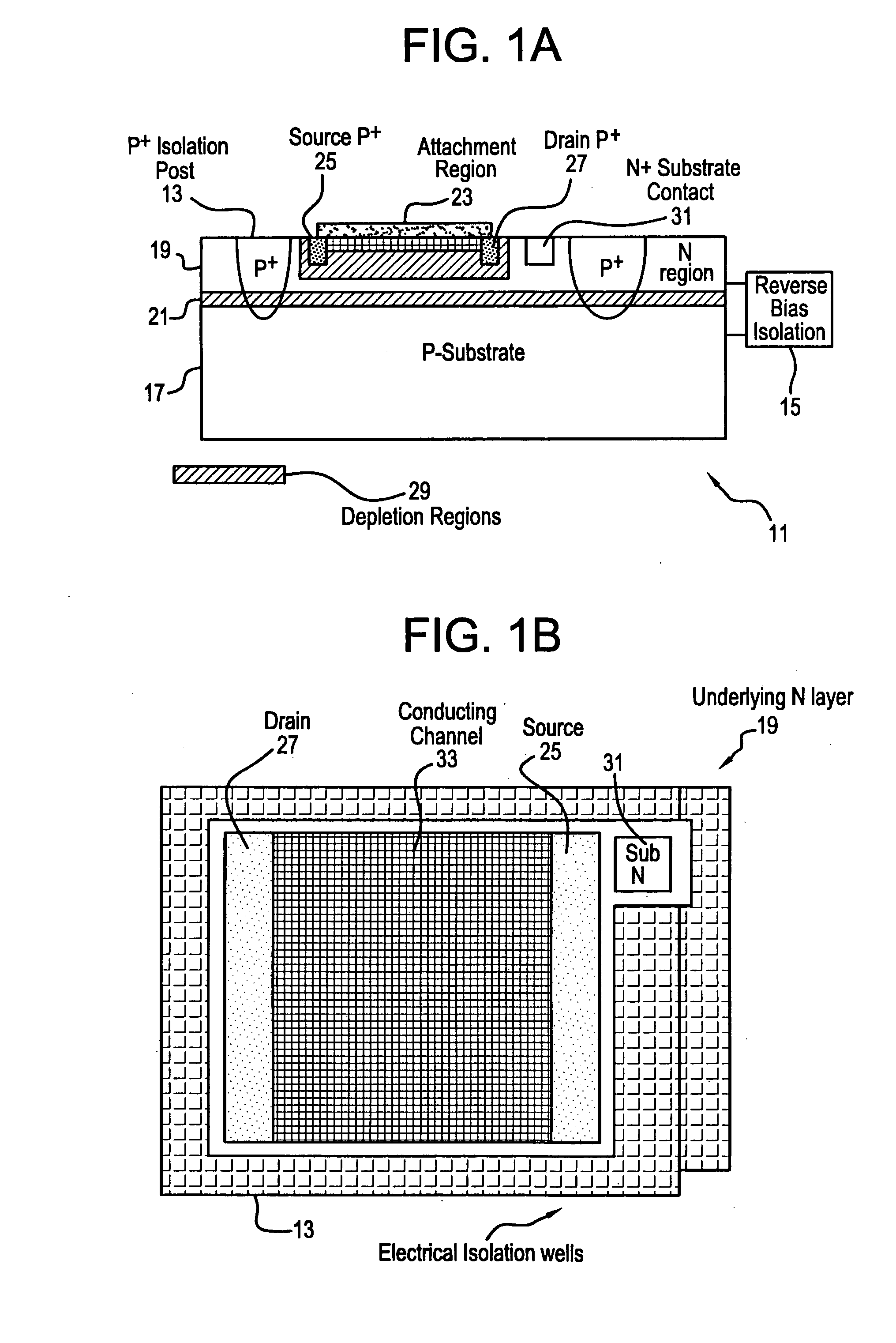Biosensor performance enhancement features and designs
a biosensor and performance enhancement technology, applied in the direction of diodes, radiation controlled devices, semiconductor devices, etc., can solve the problems of insufficient solution for biosensors, and insufficient solution for substrate reverse biases and biochemical attached charges, etc., to achieve the effect of improving biosensor performan
- Summary
- Abstract
- Description
- Claims
- Application Information
AI Technical Summary
Benefits of technology
Problems solved by technology
Method used
Image
Examples
Embodiment Construction
[0027] The present invention may take several different forms to improve biosensor performance. The first form is an increase in field oxide thickness. The field oxide is increased such that the difference between the substrate voltage and overlying drain and / or source conduit voltage creates an electric field across the field oxide that is lower than that needed to form an inversion layer and a pseudo PN junction.
[0028] Another form of improvement is to create P+ wells 13 to isolate the sensor from the substrate 17. An epitaxial N layer 19 is placed on a P substrate 17. A PN junction 21 provides basic isolation of the sensor from the substrate. However, by placing P+ posts 13 through the N epi layer 19, the N epi layer 19 is isolated from the remainder of the substrate. A back bias exists between the P region and the portion of the N-well containing the sensor, in this example, a P-Channel device. Here the well is made as small are possible depending on the size of the actual sens...
PUM
 Login to View More
Login to View More Abstract
Description
Claims
Application Information
 Login to View More
Login to View More - R&D Engineer
- R&D Manager
- IP Professional
- Industry Leading Data Capabilities
- Powerful AI technology
- Patent DNA Extraction
Browse by: Latest US Patents, China's latest patents, Technical Efficacy Thesaurus, Application Domain, Technology Topic, Popular Technical Reports.
© 2024 PatSnap. All rights reserved.Legal|Privacy policy|Modern Slavery Act Transparency Statement|Sitemap|About US| Contact US: help@patsnap.com










